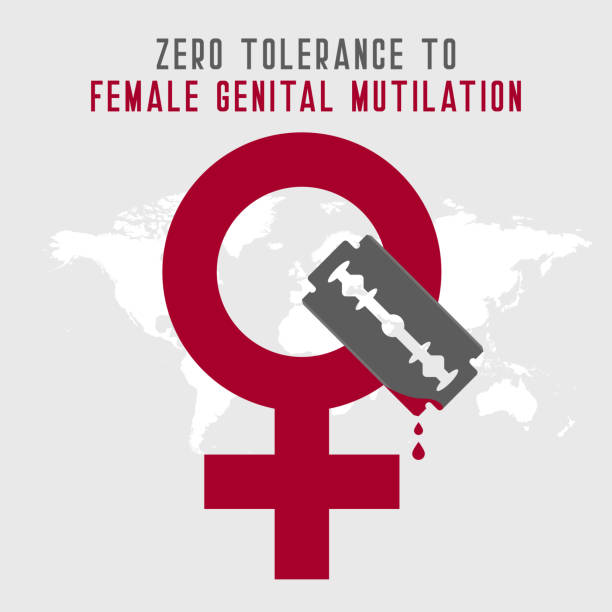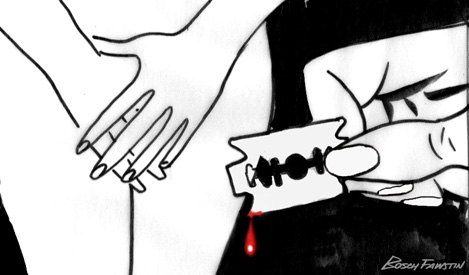The Disturbing Tradition Of Female Genital Mutilation
Trigger Warning: this article contains graphic information on mutilation, genital mutilation and violation of bodily autonomy
The practice of Female Genital Mutilation (FGM) is as horrifying as the name suggests. Carried out in some countries of Africa, Asia, the Middle East, and small communities of people belonging from the countries where it is practiced as a ritual, the practice includes cutting or removing some or all of external female genitalia. UNICEF estimated that approximately 200 million women in these regions had been subjected to one or more types of Female Genital Mutilation. Deeply rooted in the inequalities between the sexes, it’s a human rights violation against girls and women that is misguided by false ideas of purity and chastity and has extremely severe physical and psychological harm to its victims. Here’s a glance at the issue.

A detailed look into the procedure
When broadly divided, there are four main types of Female Genital Mutilation. The first (called type I) is wherein the clitoral glans (the external and visible part of the clitoris that is extremely sensitive) are either partially or completely removed. The second (called type II) is where the inner labia is either partially or completely removed. The third (called type III) is called infibulation; in which the inner/outer labia are cut away, with or without the removal of the clitoral glans. The outer labia is then sewn together with a tiny hole left open for the passage of urine and menstrual blood. The rest of the miscellaneous practices (for example symbolic nicking) are included in type IV.
The procedure is often carried out by traditional cutters. Most of the time, unsterilized blades, knives, or sometimes, rocks, glass shards, and fingernails are used and take place at the girls’ homes with or without anesthesia. In fact, in 2007, a nurse in Uganda reported that a cutter may use a single blade on up to 30 girls. Something that is even more heartbreaking is that the procedure is usually carried out by an older woman of the community and it is oftentimes celebrated. In some regions, healthcare professionals themselves aid the procedure including 77% in Egypt in 2008 and over 50% in Indonesia in 2016.

The aftermath
The consequences of FGM are dangerous – both physically and psychologically, throughout the women’s lives. Short term medical complications include swelling, excessive bleeding, pain, urine retention and the chances of short complications are maximized in type III. Other complications include anemia, urinary infection, septicaemia, tetanus, gangrene, necrotizing fasciitis (flesh-eating disease), and endometritis. Although under-reported, it is believed many girls die as a result of the complications that arise from the procedure. Moreover, the procedure can lead to increased risk of contracting HIV.
On the long term end, women develop scars, keloids, cysts that may become infected and neuroma formation. For girls who undergo type III FGM, they may experience prolonged drip by drip urination, pain while urination, stone formation, and instances where urine may fill the vagina which leads to further infections. Furthermore, many experience pain during sexual intercourse. Sometimes, obstruction in menstruation may lead to blood stagnation in the vagina and uterus, the appearance of which may resemble a pregnancy. Reportedly, in 1979, a girl was killed by her family in Sudan because they thought she was pregnant.
Women who undergo FGM have heightened risks of developing complications during pregnancies and childbirth. Due to difficulty in obtaining clear urine samples, diagnosis of preeclampsia becomes harder. Neonatal mortality increases as well. In 2006, the WHO estimated that 10-20 babies die every 1,000 deliveries as a result of FGM related complications and the chances of stillbirth increase as well. On the psychological spectrum, girls lose trust in their care-givers and develop long term feelings of depression and anxiety as an adult.

The social facet
Every year, approximately 4 million girls undergo this life-threatening procedure, usually before the age of 15. The central idea behind the purpose of the issue can be found in what the procedure is referred to as in local languages. When translated, the meanings include washing one’s hands or taking a bath. It reflects what these communities think the procedure does – the purification of a woman’s body. However, not only does it not have any medical benefits (in fact, it does quite the opposite), it can be seen as a blatant move to control a woman’s body and a gross violation of one’s boundaries.
But for something so horrific, one wonders how people in the community, especially the women, let this ritual occur in the first place. Here’s where it gets even more disturbing. Within the community women take pride in carrying out the procedure as it is linked to ideas of chastity, purity and appropriate marriage. In fact, in some cases, when fathers of the girls did not want their daughters to undergo infibulation, it was found that the girls were picked up by the grandmothers who arranged for the procedure at relatives’ homes. Which brings us to the most problematic aspect of the situation.

The victims furthering the system of abuse
The roots of this dangerous tradition lie so deep, women, who are the victims of the practice, often serve as the perpetrators of the abuse to the generation that comes after them. The procedure has been labeled as a human rights violation and yet, women take pride in performing this to the daughters of their communities. It is only when some women venture out of their communities that they discover how ghastly the tradition really is. This is precisely why awareness about the damaging consequences of FGM is important. Education is one of key ways in which this practice can be eradicated; too many lives have already been maimed. The clock’s ticking.
Cover Illustration: The Quint
Author

